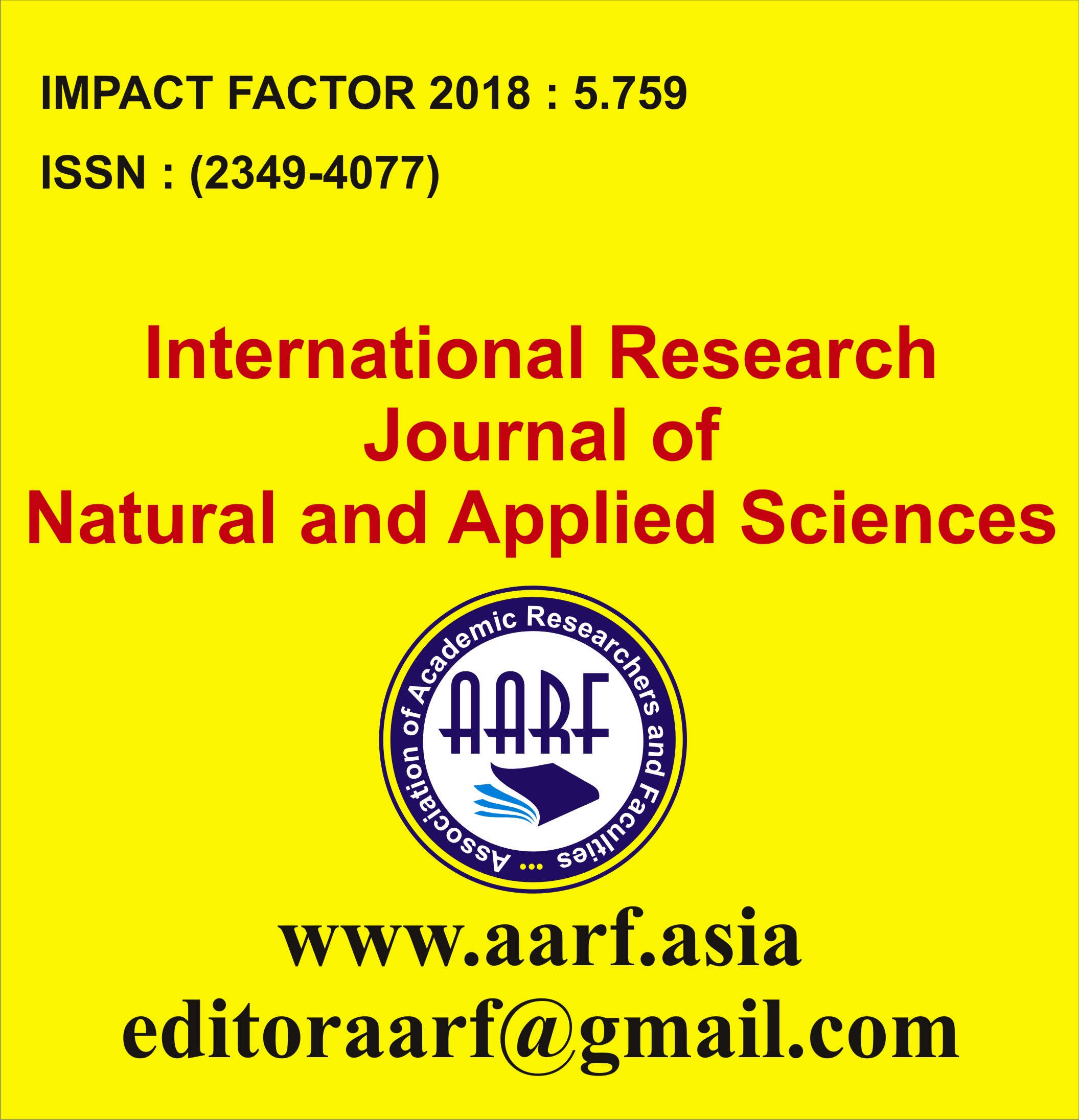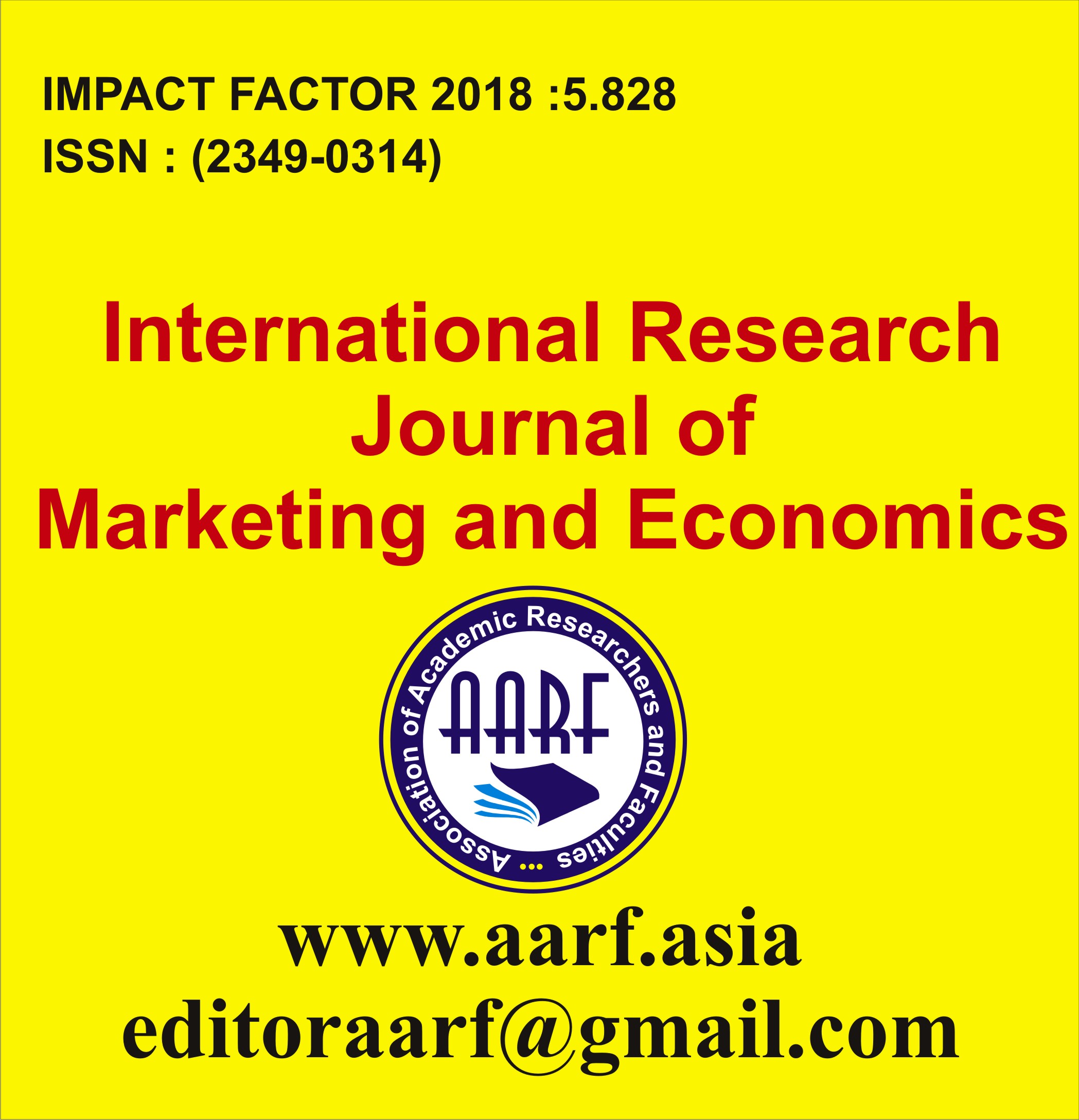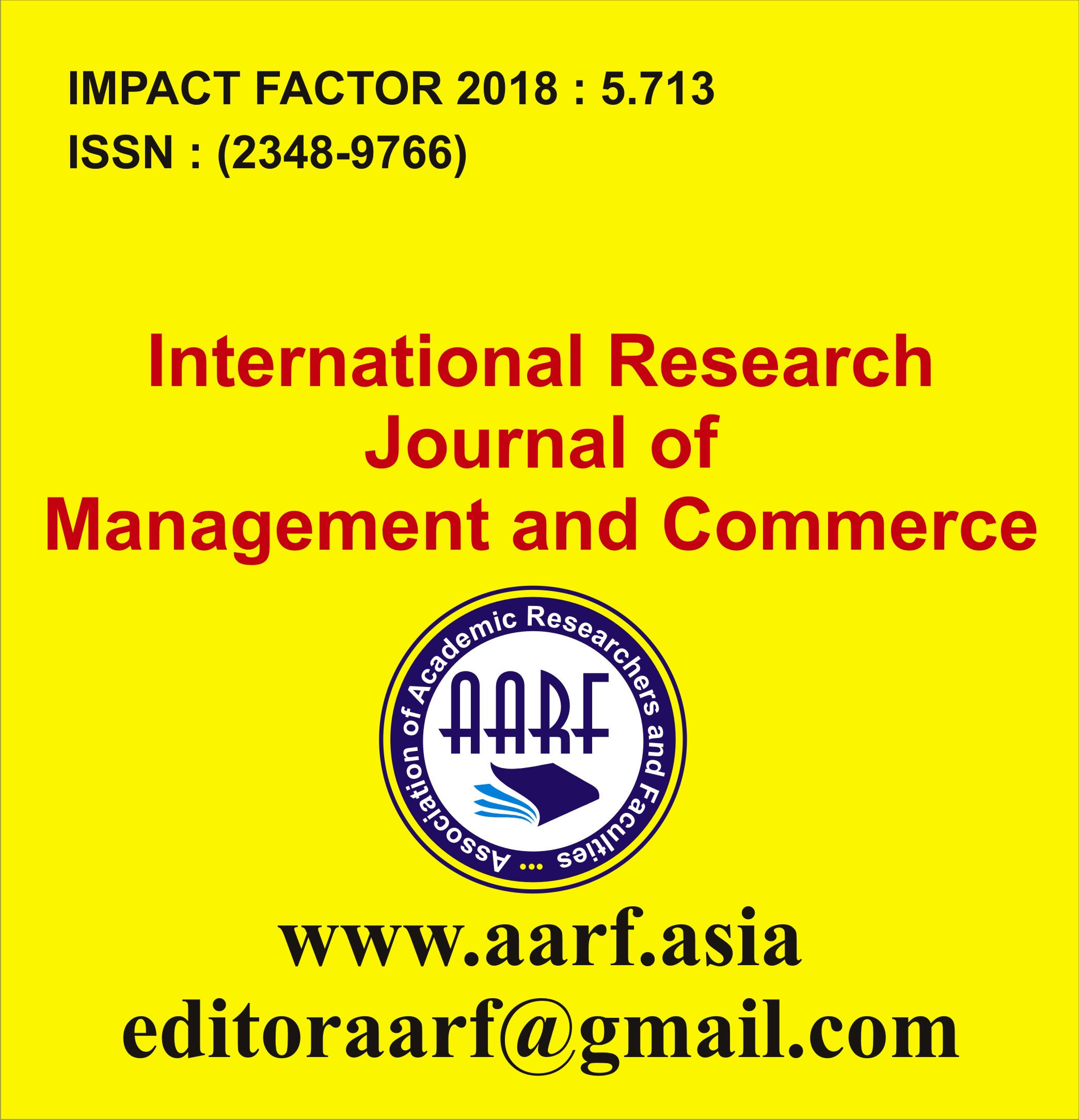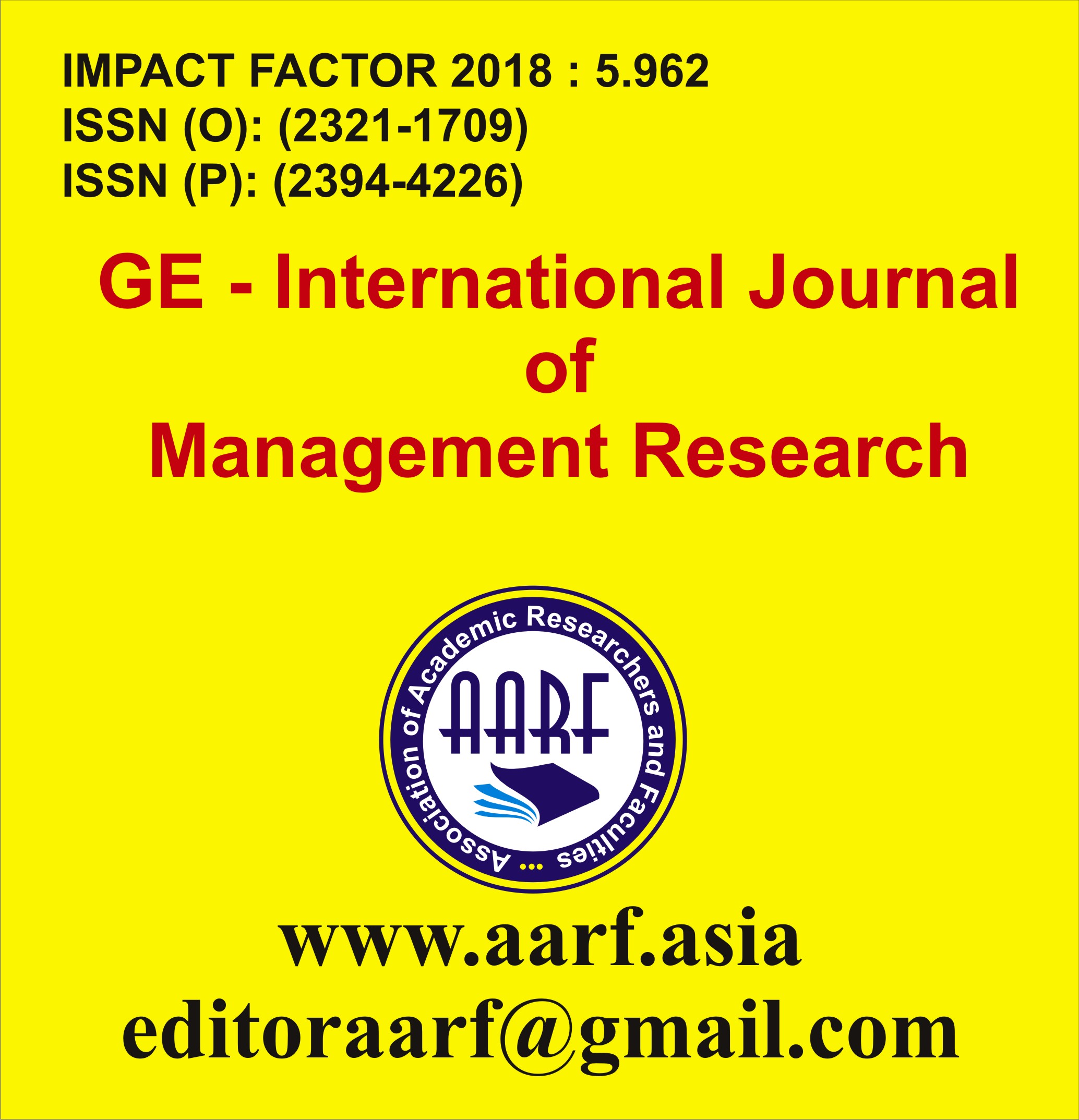| S.No |
Particular |
Pdf |
Page No. |
| 1 |
Shalini, B. R and V. N. Murulidhara*
Abstract:
Impact of anthropogenic activities in fresh water lakes results in variation in the quality of water
which is evaluated by estimating various water quality parameters along with environmental factors
such as temperature and rainfall. Altered water quality parameters cumulatively influence the biota of the fresh water lakes where phytoplanktons are noteworthy organisms. The present work was
conducted with a goal to understand the effect of water quality parameters on one of the important
groups of phytoplankton, the Chlorophyceae.
|

|
1-9 |
| 2 |
-
Formulation of Health Drink using Cucumber, Bottlegourd and Tulsi for reducing Serum Uric Acid in Individuals with Non-Alcoholic Fatty Liver Disease
DOI:18.A003.aarf.J14I01.200001.887681
*12Banani Ray Chowdhury, 1Subhadwip Dey, 3Abichal Chattopadhyay,
Abstract:
This research relates to the preparation of nutritional health-drink by mixing bottlegourd (Lagenaria siceraria), cucumber (Cucumis sativus), Holy basil (Ocimum sanctum), Stevia (Stevia rebaudiana), Lemon juice and Black salt in water. A “double-blind placebo-controlled trial†was performed to study the effect of this dietary supplement on the levels of serum UA in individuals with NAFLD.
|

|
10-29 |
| 3 |
-
Formulation of Health Drink using Cucumber, Bottlegourd and Tulsi for reducing Serum Uric Acid in Individuals with Non-Alcoholic Fatty Liver Disease
DOI:18.A003.aarf.J14I01.200001.887682
Banani Ray Chowdhury, Subhadwip Dey, Abichal Chattopadhyay, Prasanta Kumar Biswas, Sampurna Roy
Abstract:
Bottlegourd (Lagenaria siceraria) and Cucumber (Cucumis sativus) are medicinal vegetables used as low-calorie food and are rich sources of minerals and vitamins. They can control various diseases including Non-alcoholic fatty liver disease (FLD), urinary problems, kidney disorder, heart related diseases, pancreatic problems in addition to their diuretic and antioxidant activities. Body weight, hepatic steatosis, and oxidative stress indicators can all be decreased by it. Even cardiovascular problems and blood pressure fluctuations are claimed to be relieved following a regular intake of bottlegourd juice for about 4-6 months (Kothari and Rakshak, 2005).
|

|
10-29 |
| 4 |
Vishal Gohokar
Abstract:
This article has an objective to introduce the Newtonian and non-Newtonian fluids. The difference between both of these fluids is discussed based on the shear stress and rate of strain. Starting from the definition of Newtonian and non-Newtonian fluids, the Newtonian law of viscosity, many aspects regarding the dynamics and characteristics of these fluids has been studied in this article.
|

|
30-33 |
| 5 |
Parul Duhan1, Dr. Renu Sharma2, Dr. Hemant Kumar3
Abstract:
A large part of modern agriculture is played by pesticides, and new formulations of these chemicals are introduced on a very regular basis. Both 2,4-D and MCPA, which are both chlorinated acid-phenoxy herbicides, are frequently utilized for the purpose of weed control in pasture, wheat, rice, corn, and sugar cane, among other crops. Over the past several years, environmental protection groups have been significantly more worried about the presence of these molecules in soils, water, and the air, particularly with regard to the protection of the quality of drinking water.
|

|
34-43 |
| 6 |
Dr Vinod Kumar Singh
Abstract:
Petunia violacea, with its vibrant violet blooms, is a familiar ornamental plant adorning gardens worldwide. However, beyond its aesthetic appeal, traditional medicine practices in various cultures have long recognized the potential therapeutic properties of this species. This essay aims to systematically review the existing scientific literature to explore the purported role of Petunia violacea in the treatment of ulcer, diabetes, and inflammation, critically analyzing the evidence and highlighting potential avenues for future research. Studies investigating the in vitro and in vivo effects of Petunia violacea extracts, isolated compounds, or traditional preparations on these conditions were included. The review focused on identifying the reported mechanisms of action, active constituents, and the strength of the evidence supporting its therapeutic claims. The traditional use of Petunia violacea in treating gastrointestinal ailments, including ulcers, has been documented in some ethnobotanical studies. Preliminary scientific investigations offer some support for this claim. Certain studies have reported that extracts of Petunia violacea exhibit significant anti-ulcerogenic activity in animal models. These effects are potentially attributed to several mechanisms, including the inhibition of gastric acid secretion, the strengthening of the gastric mucosal barrier, and the promotion of ulcer healing. Phytochemical analysis of Petunia violacea has revealed the presence of various bioactive compounds, including flavonoids, tannins, and saponins, which are known for their cytoprotective and antioxidant properties. These compounds may contribute synergistically to the observed anti-ulcer effects by scavenging free radicals and reducing oxidative stress, a key factor in ulcer development.
|

|
45-51 |
| 7 |
Dr Vinod Kumar Singh
Abstract:
Petunia violacea, with its vibrant violet blooms, is a familiar ornamental plant adorning gardens worldwide. However, beyond its aesthetic appeal, traditional medicine practices in various cultures have long recognized the potential therapeutic properties of this species. This essay aims to systematically review the existing scientific literature to explore the purported role of Petunia violacea in the treatment of ulcer, diabetes, and inflammation, critically analyzing the evidence and highlighting potential avenues for future research. Studies investigating the in vitro and in vivo effects of Petunia violacea extracts, isolated compounds, or traditional preparations on these conditions were included. The review focused on identifying the reported mechanisms of action, active constituents, and the strength of the evidence supporting its therapeutic claims. The traditional use of Petunia violacea in treating gastrointestinal ailments, including ulcers, has been documented in some ethnobotanical studies. Preliminary scientific investigations offer some support for this claim. Certain studies have reported that extracts of Petunia violacea exhibit significant anti-ulcerogenic activity in animal models. These effects are potentially attributed to several mechanisms, including the inhibition of gastric acid secretion, the strengthening of the gastric mucosal barrier, and the promotion of ulcer healing. Phytochemical analysis of Petunia violacea has revealed the presence of various bioactive compounds, including flavonoids, tannins, and saponins, which are known for their cytoprotective and antioxidant properties. These compounds may contribute synergistically to the observed anti-ulcer effects by scavenging free radicals and reducing oxidative stress, a key factor in ulcer development.
|

|
44-51 |























